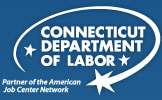| Go Back to List |
|
Prepare and cook large quantities of food for institutions, such as schools, hospitals, or cafeterias. |
|
|
|
| Technology used in this occupation: |
| |
Data base user interface and query software |
 |
| |
Clean and inspect galley equipment, kitchen appliances, and work areas to ensure cleanliness and functional operation. |
| |
Apportion and serve food to facility residents, employees, or patrons. |
| |
Cook foodstuffs according to menus, special dietary or nutritional restrictions, or numbers of portions to be served. |
| |
Clean, cut, and cook meat, fish, or poultry. |
| |
Monitor use of government food commodities to ensure that proper procedures are followed. |
| |
Wash pots, pans, dishes, utensils, or other cooking equipment. |
| |
Compile and maintain records of food use and expenditures. |
| |
Direct activities of one or more workers who assist in preparing and serving meals. |
| |
Bake breads, rolls, or other pastries. |
| |
Train new employees. |
| |
Time Management - Managing one's own time and the time of others. |
| |
Monitoring - Monitoring/Assessing performance of yourself, other individuals, or organizations to make improvements or take corrective action. |
| |
Reading Comprehension - Understanding written sentences and paragraphs in work related documents. |
| |
Speaking - Talking to others to convey information effectively. |
| |
Service Orientation - Actively looking for ways to help people. |
| |
Operation Monitoring - Watching gauges, dials, or other indicators to make sure a machine is working properly. |
| |
Quality Control Analysis - Conducting tests and inspections of products, services, or processes to evaluate quality or performance. |
| |
Judgment and Decision Making - Considering the relative costs and benefits of potential actions to choose the most appropriate one. |
| |
Management of Personnel Resources - Motivating, developing, and directing people as they work, identifying the best people for the job. |
| |
Complex Problem Solving - Identifying complex problems and reviewing related information to develop and evaluate options and implement solutions. |
| |
Customer and Personal Service - Knowledge of principles and processes for providing customer and personal services. This includes customer needs assessment, meeting quality standards for services, and evaluation of customer satisfaction. |
| |
Mathematics - Knowledge of arithmetic, algebra, geometry, calculus, statistics, and their applications. |
| |
English Language - Knowledge of the structure and content of the English language including the meaning and spelling of words, rules of composition, and grammar. |
| |
Food Production - Knowledge of techniques and equipment for planting, growing, and harvesting food products (both plant and animal) for consumption, including storage/handling techniques. |
| |
Public Safety and Security - Knowledge of relevant equipment, policies, procedures, and strategies to promote effective local, state, or national security operations for the protection of people, data, property, and institutions. |
| |
Clerical - Knowledge of administrative and clerical procedures and systems such as word processing, managing files and records, stenography and transcription, designing forms, and other office procedures and terminology. |
| |
Administration and Management - Knowledge of business and management principles involved in strategic planning, resource allocation, human resources modeling, leadership technique, production methods, and coordination of people and resources. |
| |
Computers and Electronics - Knowledge of circuit boards, processors, chips, electronic equipment, and computer hardware and software, including applications and programming. |
| |
Personnel and Human Resources - Knowledge of principles and procedures for personnel recruitment, selection, training, compensation and benefits, labor relations and negotiation, and personnel information systems. |
| |
Production and Processing - Knowledge of raw materials, production processes, quality control, costs, and other techniques for maximizing the effective manufacture and distribution of goods. |
 |
| |
(Please note that some searches may not produce any results.) |
|
|
|
|
| |
|
These occupations usually require a high school diploma.
|
| |
|
Some previous work-related skill, knowledge, or experience is usually needed. For example, a teller would benefit from experience working directly with the public.
|
|
|
|
 |
|
| Statewide |
$46,726.00 |
$22.46 |
$17.98 |
$18.94 - $24.06 |
| Bridgeport/Stamford |
$47,664.00 |
$22.91 |
$18.98 |
$20.06 - $24.19 |
| Danbury |
$44,953.00 |
$21.62 |
$18.14 |
$19.35 - $23.48 |
| Hartford |
$46,242.00 |
$22.23 |
$17.87 |
$18.89 - $23.84 |
| New Haven |
$50,097.00 |
$24.09 |
$18.41 |
$19.15 - $26.84 |
| New London/Norwich |
$42,222.00 |
$20.30 |
$16.36 |
$17.22 - $22.46 |
| Waterbury |
$43,861.00 |
$21.09 |
$17.36 |
$18.67 - $23.64 |
| Torrington |
$44,922.00 |
$21.60 |
$17.94 |
$18.93 - $23.04 |
|
 |
|
|
 |
 |
| |
Employment in this occupation is expected to grow more slowly than average, and the number of annual openings will offer limited job opportunities. |
|
|
 |
|
|



